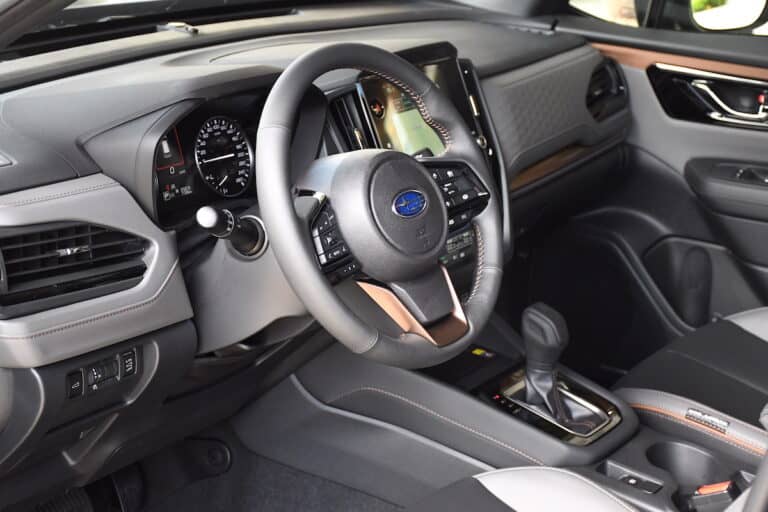Editor’s Note: We tested the Forester Touring (Premier in Canada) and Forester Sport; the Forester Wilderness and hybrid-powered Forester are due to arrive later.
Subaru launched its first Forester in 1998. Customers quickly adopted it, so much so that 2.2 million in the US and 200,000 units across Canada have since been sold in each market. In fact, since 1998, the Forester has accounted for 25% of the company’s sales.
The model is clearly crucial for the brand, but it has played second fiddle to the Crosstrek in recent years. Subaru hopes to reposition its model with this 6th generation.
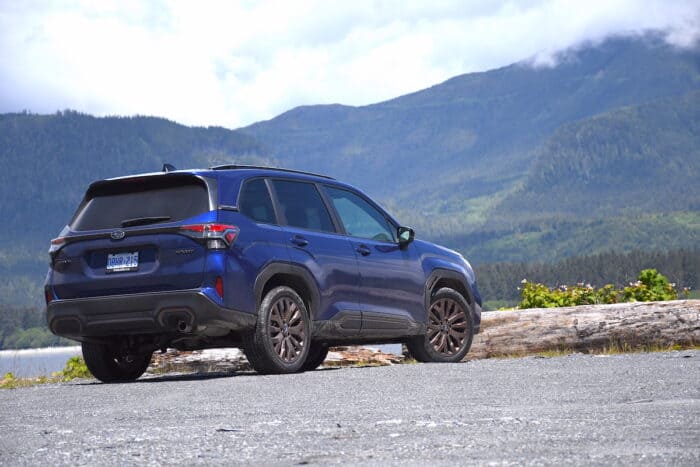
But don’t expect a revolution. The typical Subaru buyer prefers tradition to significant changes. Subaru did everything to avoid offending him with this redesign. We got behind the wheel of the mid-range Sport and range-topping Touring (Premier in Canada, where we tested it).
2025 Forester Trims and Pricing
| US | Canada |
|---|---|
| Base – $29,695 | Convenience – $33,495 |
| Premium – $31,995 | Touring – $38,495 |
| Sport – $34,495 | Sport – $40,995 |
| Wilderness (Coming) | Wilderness (Coming) |
| Limited – $35,995 | Limited – $42,995 |
| Touring – $39,995 | Premier – $44,995 |
Performance and Driving Experience: Subtle Enhancements, Familiar Feel
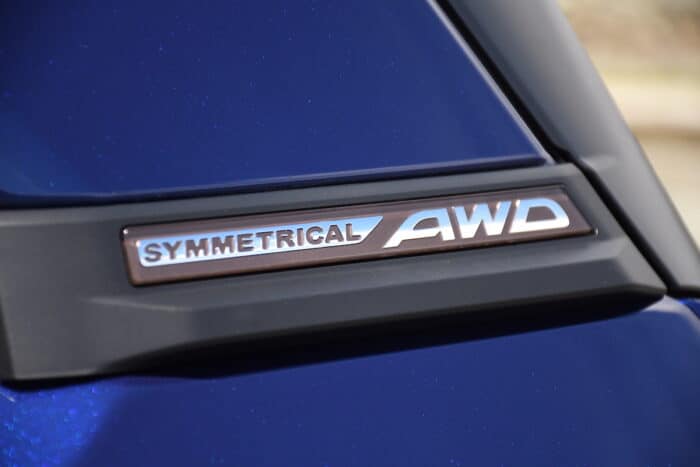
Even though we are talking about a new generation here, the 2025 Forester retains the same powertrain as the outgoing model: a 2.5-litre naturally aspirated 4-cylinder. Several modifications have been made, resulting in the loss of two horsepower but the gain of two lb-ft of torque (180 and 178). The engine has been reworked to deliver its maximum torque earlier (3700 rpm rather than 4400) to offer smoother performance.
Although soundproofing has been improved, the CVT is still very noisy under acceleration.
The continuously variable transmission (CVT) has seen 80% of its components changed or improved, once again for smoother delivery. The chassis has been stiffened (10%), and front suspension settings have been sharpened for greater comfort, smoothness and safety. Even the Sport version offers more than ever, with Stablex front shock absorbers and a steering rack borrowed from the WRX.
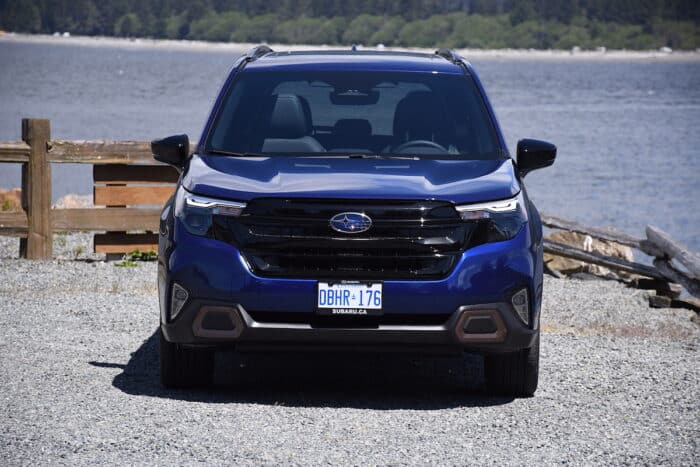
Subaru’s efforts to improve its model are to be commended. The problem is that it’s hardly noticeable behind the wheel. Although soundproofing has been improved, the CVT is still very noisy under acceleration. You can feel the increased stability and more communicative steering, but you realize it still has no sporting pretensions when you push the model a little.
In short, those expecting a transformed product will be disappointed. Those expecting a Forester will be delighted.
New Forester Interior Blends Tradition with Technology
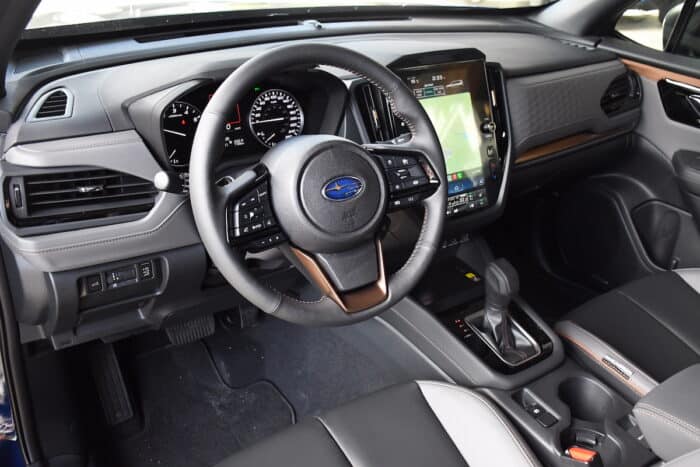
Inside, the focus was on fine-tuning. The layout remains classic, with analog dials still present in the cluster. The center console of the base model still gets a 7.0-inch screen for the multimedia system, but this increases to 11.6 inches with the other variants. The Forester is essentially equipped with the same system that has appeared on other Subaru models in recent years.
If one word dominates Subaru’s design philosophy, it’s “tradition.” When the company rethinks a model, it never revolutionizes its style; it makes it evolve.
We discover models that generally benefit from more standard equipment throughout the range. For example, the Harman Kardon audio system comes as standard earlier in the family, starting with the Sport version. Each model comes with a dual-zone climate system, wiper de-icer, USB ports A and C at the rear, and a wide-angle camera for the EyeSight safety system.

The seats have also been redesigned for greater comfort. The shoulder shape has been rounded off to make it easier to tend to children in the back. If you have any doubts about this vehicle’s vocation…
The Forester still features large windows for enhanced visibility, even if they’re far from what they were 15 years ago.
Styling: Traditional with Mixed Results
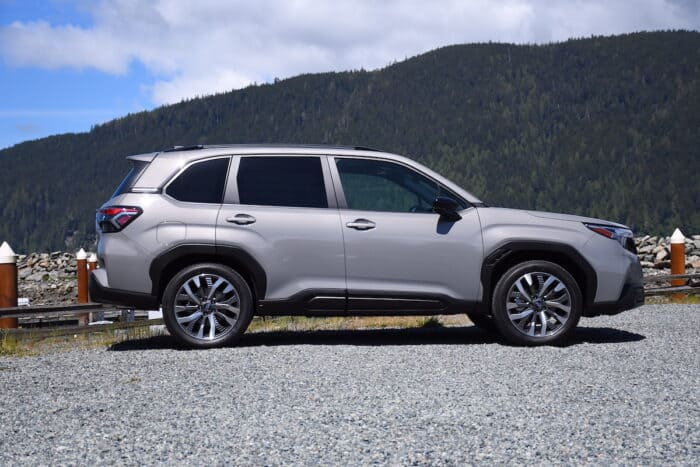
If one word dominates Subaru’s design philosophy, it’s “tradition.” When the company rethinks a model, it never revolutionizes its style; it makes it evolve. Sometimes, the result is refreshing. On other occasions, it’s less so.
The busy grille is anything but elegant. From a distance, with its large blue oval logo, the snout resembles that of a Ford.
We have mixed feelings about the changes made with this new model. The overall look remains ok; it’s recognizable as a Forester. At the rear, the changes are discreet but well done. The problem, you guessed it, is upfront. The busy grille is anything but elegant. From a distance, with its large blue oval logo, the snout resembles that of a Ford.
This shouldn’t make buyers reconsider, but it would have been nice if Subaru had served us something more aesthetically pleasing.
Related – The Redesigned 2025 Subaru Forester is Refined & Ready to Go
Takeaway
The 2025 Subaru Forester has a new fur coat, but it’s still as recognizable and comfortable as ever. Subaru buyers are among the most loyal in the industry. It’s easy to see why the company avoids shocking them with changes that are too radical.
As we said at the beginning, Subaru hopes that the changes made will help the model regain its place in the lineup.
Has enough been done? That remains to be seen.
- 500
- 560shares


